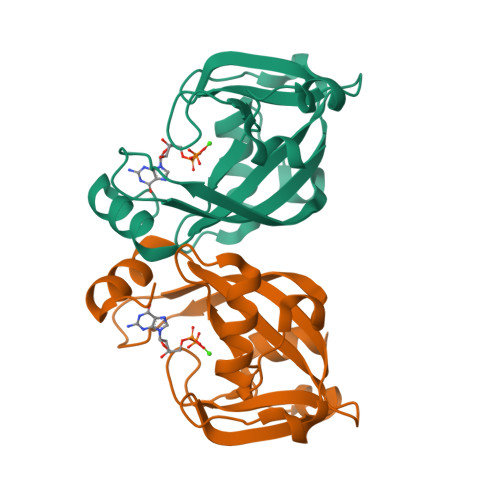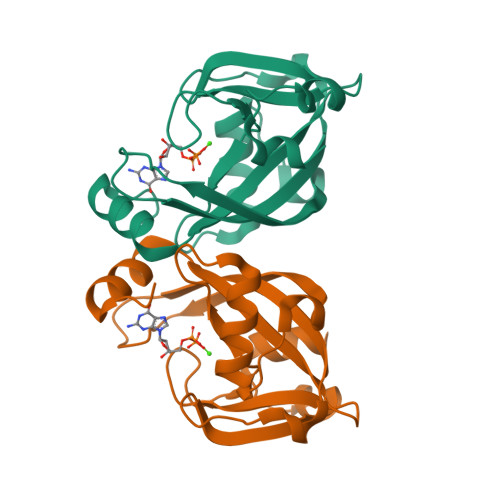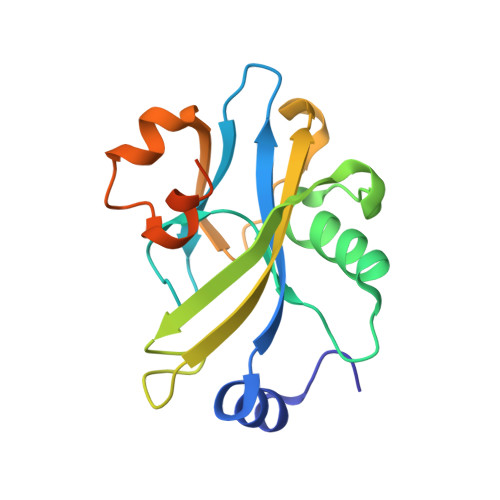Molecular basis for substrate selectivity and specificity by an LPS biosynthetic enzyme
Zou, Y., Li, C., Brunzelle, J.S., Nair, S.K.(2007) Biochemistry 46: 4294-4304
- PubMed: 17371001
- DOI: https://doi.org/10.1021/bi061056u
- Primary Citation of Related Structures:
2I8T, 2I8U - PubMed Abstract:
Diversity in the polysaccharide component of lipopolysaccharide (LPS) contributes to the persistence and pathogenesis of Gram-negative bacteria. The Nudix hydrolase GDP-mannose mannosyl hydrolase (Gmm) contributes to this diversity by regulating the concentration of mannose in LPS biosynthetic pathways. Here, we present seven high-resolution crystal structures of Gmm from the enteropathogenic E. coli strain O128: the structure of the apo enzyme, the cocrystal structure of Gmm bound to the product Mg2+-GDP, two cocrystal structures of precatalytic and turnover complexes of Gmm-Ca2+-GDP-alpha-d-mannose, and three cocrystal structures of an inactive mutant (His-124 --> Leu) Gmm bound to substrates GDP-alpha-d-mannose, GDP-alpha-d-glucose, and GDP-beta-l-fucose. These crystal structures help explain the molecular basis for substrate specificity and promiscuity and provide a structural framework for reconciling previously determined kinetic parameters. Unexpectedly, these structures reveal concerted changes in the enzyme structure that result in the formation of a catalytically competent active site only in the presence of the substrate/product. These structural views of the enzyme may provide a rationale for the design of inhibitors that target the biosynthesis of LPS by pathogenic bacteria.
Organizational Affiliation:
Department of Biochemistry, University of Illinois at Urbana-Champaign, 600 S. Mathews Avenue, Urbana, Illinois 61801, USA.


















